- Home
- Herbie Brennan
Through the Wardrobe Page 14
Through the Wardrobe Read online
Page 14
Born in Jakarta, Indonesia, of French parents, Sophie Masson came to Australia at the age of five and spent the rest of her childhood shuttling between France and Australia. She is the author of many novels for children, young adults, and adults, which have been published in many countries. Just out in the U.S. in August 2010 is her book The Madman of Venice (Delacorte Press, Random House Children’s Books).
Comedian Bob Hope once quipped that he left England at the age of four when he discovered he could never be king. But the lesson of Narnia is that you (and even Bob) can become a king or queen of your own life. Let the insightful Elizabeth E. Wein be your guide. . . .
Prince to King
Caspian’s First Voyage
ELIZABETH E. WEIN
Once a king or queen in Narnia, always a king or queen.” That’s what Aslan tells the Pevensie children, Peter, Susan, Edmund, and Lucy, as they take the four thrones at Cair Paravel in their first Narnian adventure, The Lion, the Witch and the Wardrobe. If you count pages, no king in C. S. Lewis’s Narnia books actually gets more airtime than Caspian X. He plays a starring role in two books, Prince Caspian and The Voyage of the Dawn Treader, but in fact he’s also king of Narnia throughout The Silver Chair.
From the day Caspian is forced to run away because his uncle Miraz wants to kill him, Caspian is called “king” by his tutor, the half-Dwarf Doctor Cornelius. The rest of the book describes how Caspian manages to win his kingdom back from Miraz. So why is the book called Prince Caspian instead of King Caspian?
I think it’s because Prince Caspian isn’t about Caspian’s successful rule as an adult. It’s about his journey to adulthood and to kingship—in Prince Caspian, the two are the same. Lost and alone in the beautiful, bewildering thicket of the trackless Narnian forest, Caspian has to find his own way. He has to learn to think for himself, to believe in himself, and to be responsible for himself. Only then, when he has mastered these three things—awareness, faith, and responsibility—can he take the throne as a true king of Narnia.
Awareness
The first of these characteristics, awareness, leads to and reinforces the others. Awareness means knowing yourself and knowing the limits of your own strengths and weaknesses, but it also means being aware of what is right and true. Our inner mind and heart know the truth, whether or not we choose to act on it. For C. S. Lewis, accepting one’s inner truth leads to adulthood and kingship.
In Prince Caspian, Caspian is faced with two main challenges: he must restore Narnia, bringing its creatures and its magic out of hiding, and he must become Narnia’s king. Both tasks mean doing away with deceptions that hide the truth—in Narnia’s case, the truth that magic, mythical creatures, and Talking Animals exist; and in Caspian’s case, the truth that he is Narnia’s rightful king. In both cases, Caspian’s uncle King Miraz is the source of the deception. Miraz has silenced all mention of Narnia’s true nature, and he has also denied Caspian’s right to the throne by styling himself king in Caspian’s place. To defeat Miraz, Caspian must strip away these deceptions, so that true awareness can reign freely. But first Caspian must himself become aware.
Caspian is a questioning child from the start; he wants to know more about Old Narnia, and though his eagerness results in his nurse being sent away, it results positively in Doctor Cornelius being hired as his tutor. Caspian is also quiet and watchful. He does not appear to be treated cruelly under the care of King Miraz and Queen Prunaprismia, but even as a child he is observant enough to realize that his aunt dislikes him and that the kingdom is unhappy because “the taxes were high and the laws were stern and Miraz was a cruel man.”
Despite this, Caspian doesn’t know who he himself is. Until Doctor Cornelius tells him, Caspian is unaware that he is Narnia’s rightful king. Once he is aware of the truth, he chooses, rightfully, to act on it. . . . Though his first act as king of Narnia is what amounts to running away from home. This is Caspian’s first step toward becoming who he is meant to be (who he already is, Lewis suggests): Caspian must know in his heart that Doctor Cornelius is telling the truth about his identity (and Miraz’s plans to kill him), or he would not have the courage or desire to leave the castle.
Caspian’s dawning awareness of Old Narnia’s existence follows a similar pattern. He learns about it in nursery tales, and although Miraz tells him the tales aren’t true, Caspian never gives up hope. When he learns that Doctor Cornelius is half-Dwarf, it is enough confirmation of what Caspian has always believed to be true that he enters the Narnian forest in search of its magical inhabitants.
This leads directly to “the happiest times that Caspian had ever known.” He meets the three Bulgy Bears, Talking Squirrels, and the Red Dwarfs, who immediately hail him as their king. He meets Centaurs and Fauns, and Reepicheep the Talking Mouse, whose bravery and loyalty are limitless. Though Caspian now sleeps beneath the stars and lives on a diet of well water, nuts, and wild fruit, “he had never enjoyed himself more.” Living in tune with—with awareness of—Narnia’s true nature and his own changes him for the better: “he began already to harden and his face wore a kinglier look.”
Faith
Caspian’s choice to leave the castle, the only home he’s ever known, requires faith: faith in his tutor’s words, faith in himself, and faith in what he knows inside himself to be true. Awareness alone is not enough to make Caspian king; he also has to have faith.
The Telmarines, Caspian’s ancestors, are men—sons of Adam and daughters of Eve—and it is this bloodline that allows them to be kings and queens of Narnia. But to be a true king or queen of Narnia, blood is not enough; you must also believe in Narnia. The reader assumes that, though the Telmarine kings who preceded Caspian might have fought against, feared, and silenced the inhabitants of Old Narnia, they never doubted their reality. It is Miraz, the usurper, who scorns Old Narnia as a pack of nursery tales. Narnia’s true kings do not doubt Narnia, or the Lion who created it. The Narnian kings believe.
Caspian, who is raised as a prince regardless of his uncle’s ambitions, pays as much attention to his old nurse’s bedtime stories of Narnia as to his royal education. His belief in these tales wins him the Old Narnians’ loyalty and Aslan’s blessing. Even before Caspian has full control of his subjects, even when he has to fight to win his kingdom, he believes in Narnia. From the start, he wants to believe his nurse. He believes Doctor Cornelius on the night he advises Caspian to run away. He believes in the good of the blowing of the Horn of Need. When Peter, Susan, Edmund, and Lucy finally appear, Caspian never doubts who they are. He may waver when it comes to making decisions, but he never wavers in his faith in Narnia. Aslan never has to put Caspian’s belief to the test, as he does to just about everyone else in Prince Caspian—especially poor Lucy, who ends up with the nasty job of having to follow the Lion’s lead when no one else can see him. But when Caspian first meets Aslan, the great Lion simply gives him a face-to-face greeting and makes him king.
Prince Caspian makes another important point about faith. In The Last Battle, Susan is cut off from Narnia forever because she denies her belief in Narnia—and you can see her betrayal foreshadowed even in Prince Caspian, when she refuses to support Lucy’s insistence that she sees Aslan, and that he is telling the children to follow him through the forest. Later, when Susan admits to Lucy that she never doubted Lucy saw Aslan all along, Susan says, “I really believed it was him—he, I mean—yesterday. And I really believed it was him tonight, when you woke us up. I mean, deep down inside. Or I could have, if I’d let myself.” Faith, we see here, is a choice. Susan’s denial comes because she chooses not to have faith in what she knows, deep down, to be true. In contrast, Caspian and the other Pevensie children choose to believe.
Responsibility
Responsibility can come in two different forms. The first is when you accept responsibility for something outside yourself: for example, a job that needs doing, like leading a battle or taking care of another person. The other kind of responsibility involves accepting the
results of your own deeds, thoughts, and plans—taking responsibility for your actions. Often the two kinds of responsibility work hand in hand: when you accept responsibility for leading a battle, you must also accept responsibility for your role in the battle’s outcome, even if your army fails.
When he becomes king of Narnia, Caspian accepts both kinds of responsibility. He makes considerable mistakes in leading his army of Old Narnians at first; he doesn’t know enough about them to manage his army effectively. His very diverse Beasts and creatures love him and would do anything for him, but he keeps giving the wrong jobs to the wrong people—he doesn’t realize “that Giants are not at all clever” and so he assigns a key battle strategy to the Giant Wimbleweather, who then accidentally runs out at the wrong time and loses the battle. And Caspian rightfully blames himself, not his subjects, for his early mistakes in understanding them.
When a fight breaks out at council and the Dwarf Nikabrik is killed, Caspian shows he is able to accept even a more personal responsibility. The fight happens in the dark. Caspian may or may not have slain Nikabrik himself, and says, “I don’t know which of us killed him. I’m glad of that.” Caspian doesn’t like to face the fact that he might have done it, but he does face up to it—he knows he did kill someone in the fight. Caspian also accepts responsibility for the circumstances that led to the fight and Nikabrik’s death. He blames himself for Nikabrik’s death regardless of who may have delivered the killing blow; after the fight in Aslan’s How, he says, “If we had won quickly he might have become a good Dwarf in the days of peace.”
Caspian also learns to delegate responsibility when others might serve better than he can. Though he wants to fight Miraz himself, he knows that since he has been wounded by the werewolf he doesn’t have the strength—and so he makes the responsible decision to allow Peter to fight the decisive duel in his name. Caspian puts personal pride and anger aside, and makes the best decision for Narnia.
L’Etat, C’est Moi: The King Connects to the Land
In Narnia, you can hide or disguise or forget yourself, or you can be ignorant or imprisoned or enchanted, but you can’t fundamentally change your own nature. The land of Narnia itself is the same: it can be under an enchantment, such as the White Witch’s, or under foreign rule, such as Miraz’s. But at heart it doesn’t change. And as Caspian awakens to his own identity, his growing certainty of himself and his kingship is mirrored in Narnia’s awakening.
The Narnian landscape is a living thing. In The Magician’s Nephew, when Narnia’s magical creatures are created, they all pop up out of the ground itself. The land responds to its inhabitants, and its inhabitants to the land. . . . And this is especially true, it seems, of its rulers.
Consider the Pevensie children, who are already once-and-always Narnian kings and queens in their own right. When they arrive back in Narnia, called by Caspian’s blowing of the Horn of Need, they don’t know where they are or what their mission will be. Their own familiar castle at Cair Paravel is so long ruined and overgrown that it is scarcely recognizable. But gradually they recognize the layout of the castle and arm themselves with their own gifts from Aslan. They guess they might have a heroic job to do, even if they don’t know what it is. They remember their adult selves as kings and queens, and they quickly grow comfortable in these roles. Simply by arming themselves Peter and Edmund look and feel “more like Narnians and less like schoolchildren,” and after being in Narnia for only a day Edmund is ready to duel with Trumpkin: “. . . the air of Narnia had been working upon him ever since they arrived on the island, and all his old battles came back to him, and his arms and fingers remembered their old skill.”
In the beginning of Prince Caspian, before Caspian knows who he really is or what his destiny will be, Old Narnia is only remembered in bedtime stories. The Talking Animals and mythical creatures are in hiding; the Dryads and Naiads, the spirits of trees and water, are asleep. In order for Caspian to become king he has to win these beings’ loyalty, and before he can do that they must all be found and in some cases woken. A great deal of the action in Prince Caspian simply describes the gathering and waking of Narnia’s citizens.
The wintry Narnia that Lucy stumbles across when she goes through the wardrobe for the first time in The Lion, the Witch and the Wardrobe is enchanted by the White Witch, and its people are in hiding or else have been turned to stone. The Pevensie children have to help time start moving again, to allow spring to come and bring the frozen land back to life. In Prince Caspian, though, Narnia is not laid waste. It is not frozen and dead. But it is dormant. The Dryads have gone back to being trees. The Talking Animals and other magical creatures have all disappeared. The few who are still around, Dwarfs and half-Dwarfs, have to disguise themselves as humans for their own safety. The task in Prince Caspian is to wake Narnia rather than to bring it back to life.
Caspian and his kingdom seem very closely connected; his forces only succeed when the two are completely united. His battle against the Telmarine usurpers is not won until the Old Narnian army of trees roused by Aslan and Bacchus joins forces with Caspian’s army. Lewis highlights this connection by interspersing Caspian’s adventures with the episodes illustrating Narnia’s awakening. While Caspian is busy throwing off his personal enemies—the hag, the werewolf, Nikabrik, Miraz—Old Narnia is throwing off its enemies—the bridge that “chains” the river at the Ford of Beruna, nasty teachers, and mean-spirited children. Schools are closed, drudges are freed, the sick are made well. And Caspian becomes king.
“Once a King or Queen in Narnia, Always a King or Queen”
In The Lion, the Witch and the Wardrobe, the four empty thrones in Cair Paravel represent the Pevensie children’s right to rule Narnia. But none of them can claim that right until all battles are won, justice is done, and order restored. Peter, Susan, Edmund, and Lucy are kings and queens by destiny and prophecy, but they cannot take those thrones until they have proven themselves, not just as heroes, but as individuals.
Caspian’s flight from home, his first fumbling attempts at leadership, his councils gone awry and his missed opportunity to battle Miraz in single combat, all contribute to the experiences that ultimately make him a just and able king. He may have become a king as a child, but he has first proved himself capable of adult behavior. Once he has recognized his inner flaws and rejected them for his inner strengths, he becomes not just a king but an adult. For Caspian the journey to royalty and adulthood are the same: both journeys are about him finding out who he is. But Lewis tells us something else here. He tells us that the same is true for all of us. Once we know who we are, we each become a kind of king or queen in our own right.
In the Narnian view, if you are noble-minded, you don’t need to be of noble birth or raised in a noble household. You don’t have to have royal blood. You don’t even have to be educated. You just have to have the strength to make your own decisions, to stand up for what you believe is right, to be fair and brave, and to be willing to accept responsibility and to admit to your mistakes. Regardless of their birth, the Pevensies are considered Narnia’s greatest kings and queens ever, and their reign is called Narnia’s “golden age.” Their right to the four thrones in Cair Paravel is based on their having earned it through their own kingly and queenly actions. They are sons of Adam and daughters of Eve, and they carry their nobility through that unbreakable bloodline.
Any one of us could do the same.
Elizabeth Wein’s young adult novels include The Winter Prince, A Coalition of Lions, and The Sunbird, all set in Arthurian Britain and sixth century Ethiopia. The cycle continues in The Mark of Solomon (Viking), published in two parts as The Lion Hunter (2007) and The Empty Kingdom (2008). Recent short fiction appears in Sharyn November’s Firebirds Soaring (Firebird 2009). She’s now taken off in a different direction with the forthcoming Code Name Verity, a thriller set during World War II. Elizabeth has a PhD in Folklore from the University of Pennsylvania. She and her husband share a passion for maps and flying smal
l planes. They live in Scotland with their two children. Elizabeth’s website is www.elizabethwein.com, and she keeps an erratic blog at http://eegatland.livejournal.com.
Ever notice how much effort the government puts into frightening you silly these days? Hardly a week goes by without some new warning about terrorism . . . global warming . . . bird flu . . . asteroid impacts. . . . But scare stories have been out there for a long time, and Susan Juby is about to tell you how, amid the doom and gloom, she found a ray of hope in Narnia.
Waking Up the Trees
SUSAN JUBY
The animal shall not be measured by man. In a world older and more complete than ours, they move finished and complete, gifted with extensions of the senses we have lost or never attained.
—Henry Beston
The just man rages in the wilds
Where lions roam
—William Blake
The way I read him, C. S. Lewis was a tree-hugger. He was a don at Oxford and very dignified, so he probably skipped the tie-dye and the patchouli incense, but his Chronicles of Narnia, and especially Prince Caspian, suggest that he was as green as any modern day eco-freak. Prince Caspian can be seen as the fantasy equivalent of Al Gore’s An Inconvenient Truth: it shows us that we human beings can become more responsible citizens of the planet Earth, if only we face the facts about the effects we have on our environment and let ourselves get a little closer to Nature.

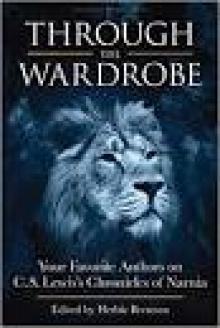 Through the Wardrobe
Through the Wardrobe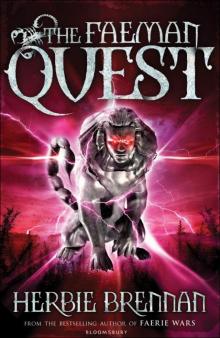 The Faeman Quest fw-5
The Faeman Quest fw-5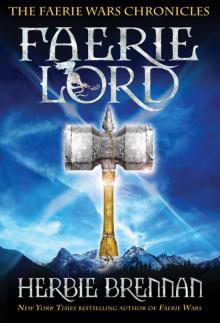 Faerie Lord
Faerie Lord Madame de Gaulle's Penis
Madame de Gaulle's Penis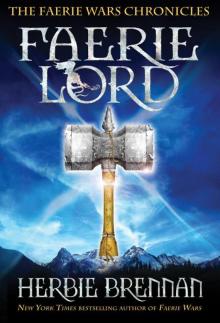 Faerie Lord fw-4
Faerie Lord fw-4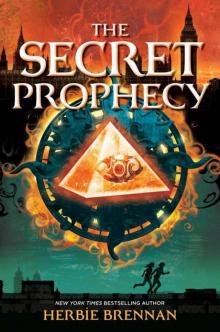 The Secret Prophecy
The Secret Prophecy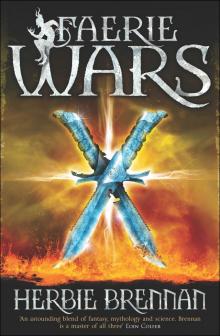 Faerie Wars
Faerie Wars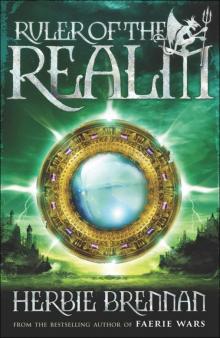 Ruler of the Realm
Ruler of the Realm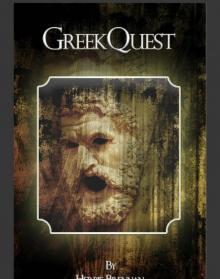 GreekQuest
GreekQuest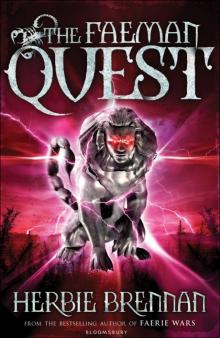 The Faeman Quest
The Faeman Quest The Purple Emperor
The Purple Emperor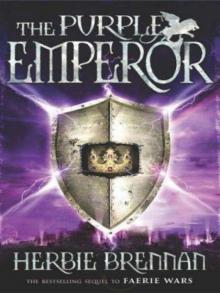 The Purple Emperor fw-2
The Purple Emperor fw-2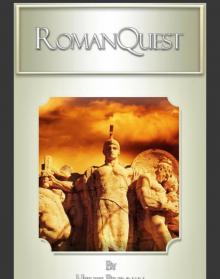 RomanQuest
RomanQuest The Doomsday Box
The Doomsday Box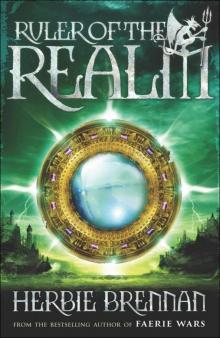 Ruler of the Realm fw-3
Ruler of the Realm fw-3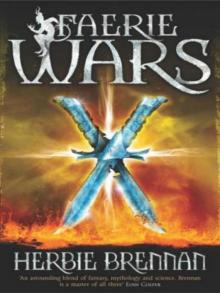 Faerie Wars fw-1
Faerie Wars fw-1